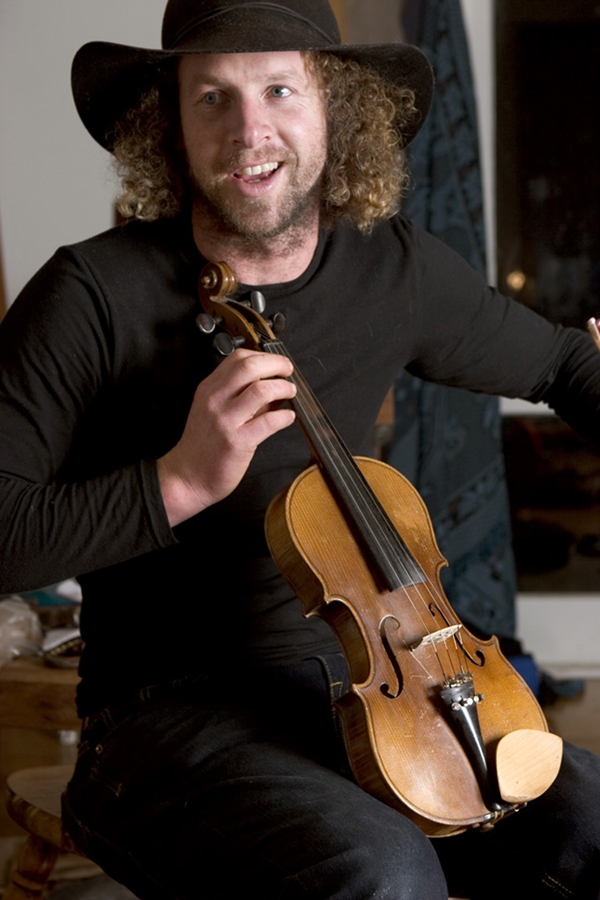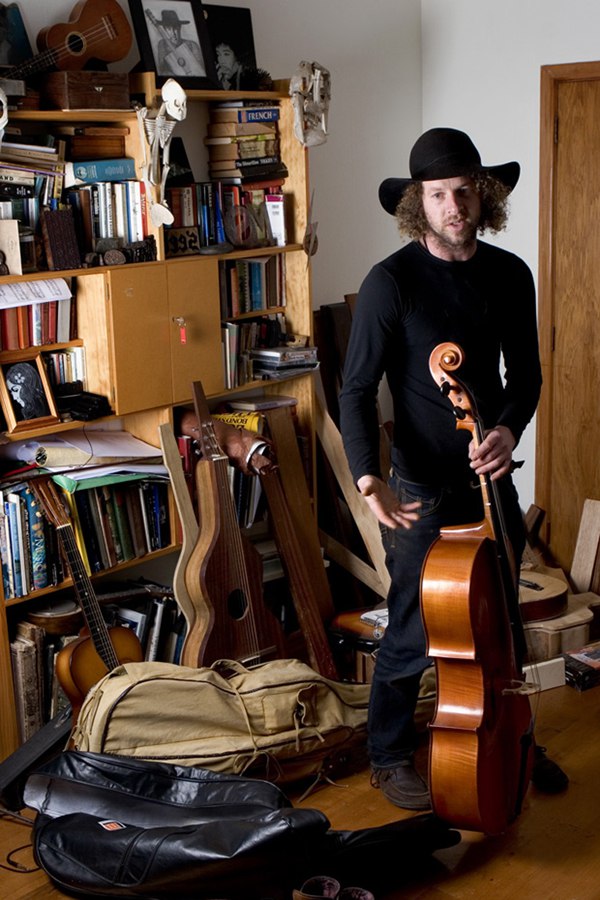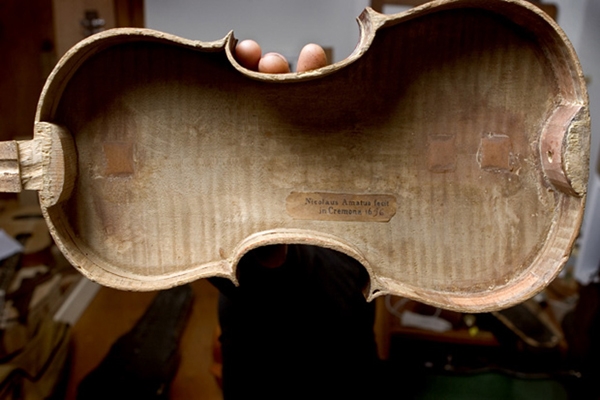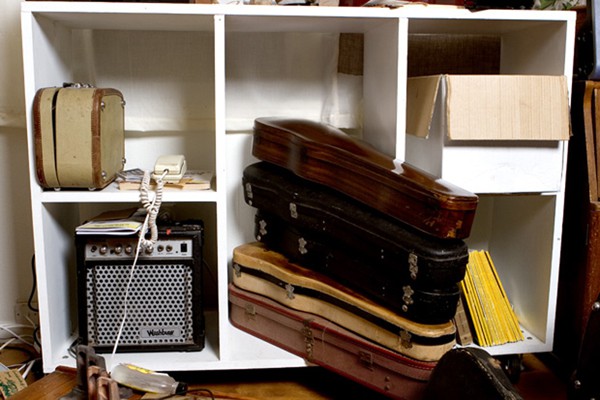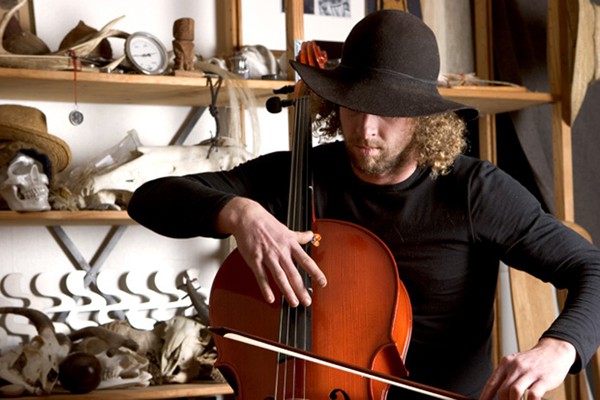photos: Kelda Aikman
words: Kelly Moana
“I don’t talk to anyone”. We’re sitting in his lounge, or what may be more aptly described as his workshop, surrounded by violins and instruments of all sizes, all in varying stages of re or deconstruction. As a complete newby to this violin making world, it’s impossible for me to tell. So how does one get to this place? I must have wondered out loud, because after his first confession, a small smile starts, and the words begin to flow as his picks his way through, stroking, illuminating, and describing through each piece of art at our feet…
It began, simply because no one can teach him how to play violin. He plays left handed, with the violin upside down, resting on his knee. Initially, trying to make one by mirror, he swapped over the strings. That didn’t work, so he opened it up. And like what is happening here with me, he got an education.
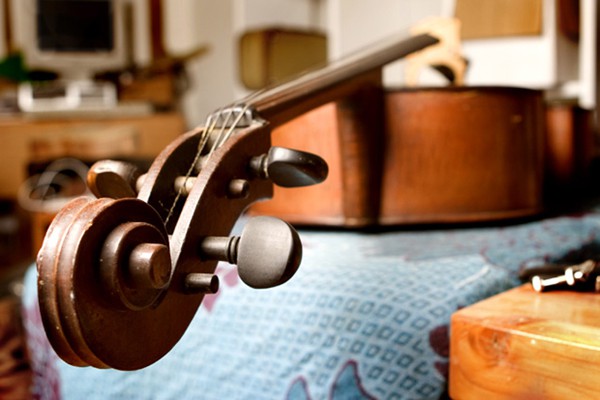
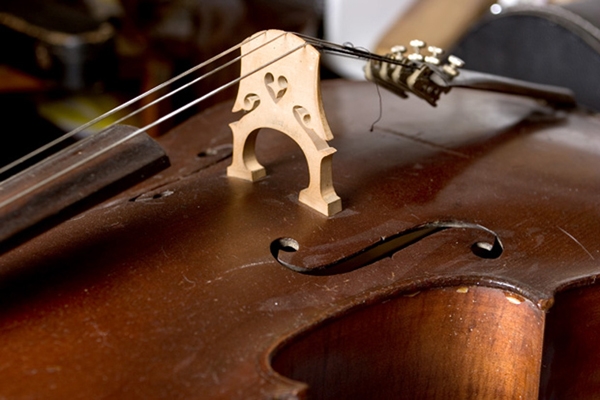
There are few left making violins, and those that are, are cagey with their information, and not likely to let go of their tools. Web trawling, library books on woodcraft, asking around, and like any person with a passion, improvisation. Clamps are expensive, so he cut up an old oak dresser and made his own. Tools are few and far between and what comes from Europe, is pricey. He knows Japanese steel is the best, and through word of mouth, an old samurai sword maker who lives inland from Whakatane heard what he was doing. He got in contact, pointed him in the direction of a place to find what he might be looking for. And find he did. Essentially Japanese steel and a piece of wood, they work better than the European versions, and at a fraction of the price. The snobbery of the violin world that seeps its way even into the tools, does not extend to this maker in his lounge in Te Uku.
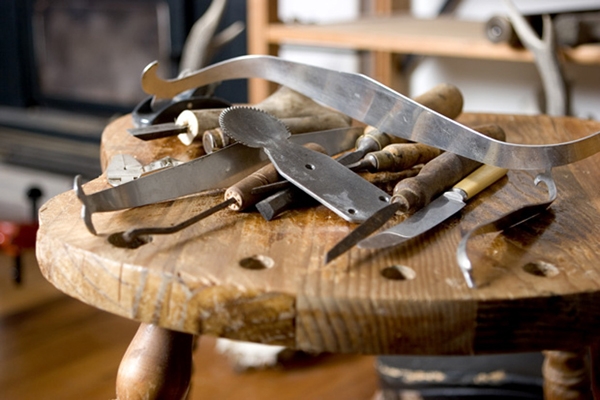
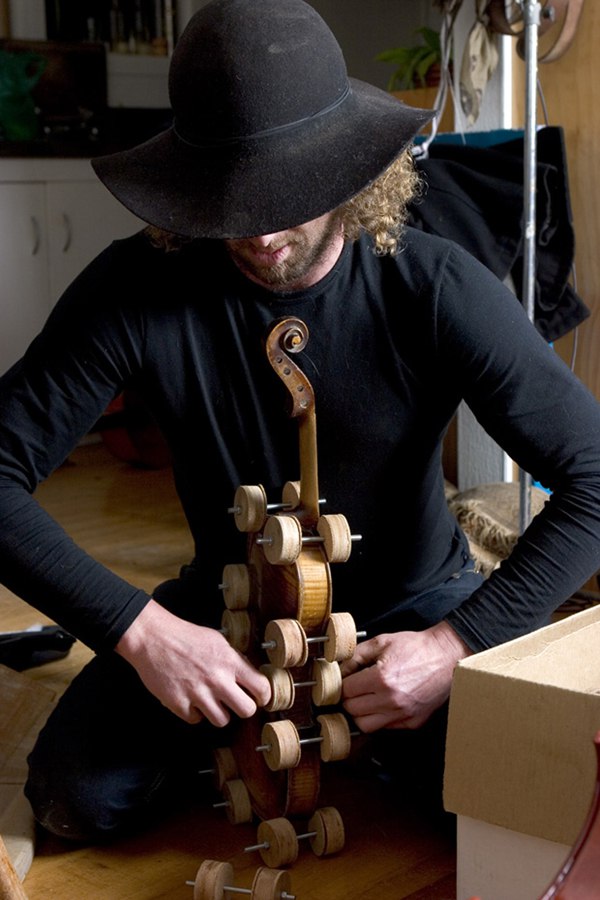
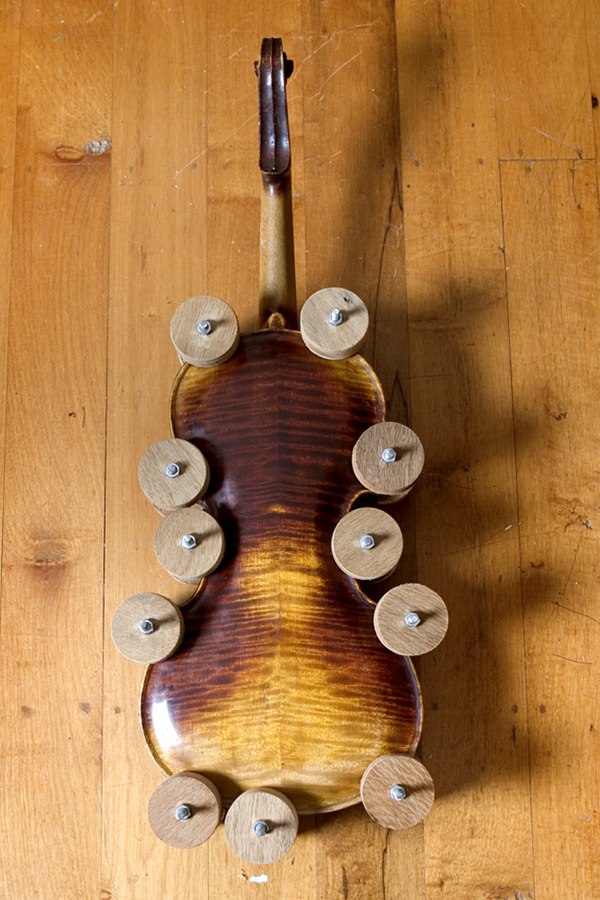
Names and terms are spoken into the air, and combine so their origin is blurred, and they are just part of the craft. Hide glue – A glue used to bind wood, that separates with hot steam, but has been found in tombs of the pyramids still bonding – in one case binding together a chair so well it could still be sat on. Stradivarius – The god of the violin making world. A master who didn’t know in his lifetime, just how much his work would shape the future of the violin, and to whom the violin world would cling to. So much so, that Marten feels they are all looking backwards.
“Talk for a time to people who operate in the violin market and you will eventually be told, darkly, ‘You know, there are many bad Strads’, instruments that may once have been great but no longer have a following. They gather dust in storerooms in New York, London or Tokyo, ostensibly for sale, waiting for the player that will fall in love with them, whose technique happens to be exactly what is required to coax them back to their best, when in fact they are not good enough, instruments destroyed by time. One day, supplies of the great classical violins will run out. We need a new Stradivari.” – Toby Faber.
He understands that he must learn why things were done by others, so when he’s making his way forward, he doesn’t find himself back at the same tree, with some long forgotten makers name carved into the side, something he missed the first time around. But he is keen to move forward, and lives by some words of Albert Einstein “Imagination is more important than knowledge.” Not that knowledge isn’t at play here. The hairdressing apprenticeship he did when he left school, helps when re-hairing a bow (the bow constructed, as all of them are, with approximately 200 hairs from the tail of a Mongolian stallion). So many little details, like the secret messages left inside by repairers, from their name and date, to what is happening at that time.

